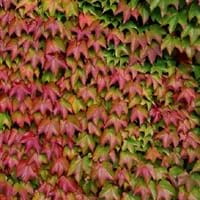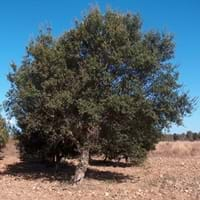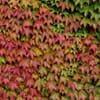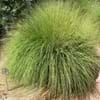Life Span
Perennial
Perennial
Origin
United States, Mexico
Southern Europe, Mediterranean, Northern Africa
Types
Not Available
Not Available
Habitat
Deciduous forests
Open Forest
USDA Hardiness Zone
4-10
7-9
AHS Heat Zone
12 - 1
12-3
Sunset Zone
A1, A2, A3, H1, H2, 1a, 1b, 2a, 2b, 3a, 3b, 4, 5, 6, 7, 8, 9, 10, 11, 12, 13, 14, 15, 16, 17, 18, 19, 20, 21, 22, 23, 24
5, 6, 7, 8, 9, 10, 11, 12, 13, 14, 15, 16, 18, 19, 20, 21, 22, 23, 24
Habit
Vine/Liana
Oval or Rounded
Flower Color
Ivory
Red, Yellow green
Flower Color Modifier
Bicolor
Bicolor
Fruit Color
Not Available
Not Available
Leaf Color in Spring
Green, Dark Green, Sandy Brown, Burgundy
Green, Gray Green, Dark Green
Leaf Color in Summer
Green, Dark Green, Sandy Brown, Burgundy
Gray Green, Dark Green
Leaf Color in Fall
Green, Dark Green, Sandy Brown, Burgundy
Gray Green, Dark Green
Leaf Color in Winter
Light Green
Gray Green, Dark Green
Leaf Shape
Maple shaped
Lobed
Plant Season
Not Available
Spring, Summer, Fall, Winter
Sunlight
Full Sun, Partial Sun
Full Sun, Partial Sun
Growth Rate
Very Fast
Slow
Type of Soil
Clay, Loam, Sand
Clay, Loam, Sand
The pH of Soil
Acidic, Neutral, Alkaline
Acidic, Neutral, Alkaline
Soil Drainage
Well drained
Average
Tolerances
Wet Site
Drought, Salt
Where to Plant?
Container, Ground
Ground
How to Plant?
Root Division, Stem Cutting
Seedlings, Stem Planting, Transplanting
Plant Maintenance
Medium
Medium
Watering Requirements
Keep the Soil well drained
Average Water Needs, Do Not over Water, Keep ground moist, Never Over-water, Requires watering in the growing season, Water less during winter
In Summer
Lots of watering
Lots of watering
In Spring
Moderate
Moderate
In Winter
Average Water
Average Water
Soil pH
Neutral
Acidic, Neutral, Alkaline
Soil Type
Well drained
Clay, Loam, Sand
Soil Drainage Capacity
Well drained
Average
Sun Exposure
Full Sun, Partial shade
Full Sun, Partial Sun
Pruning
Cut off the flower stalks at the base of the plant, Prune after flowering
Remove damaged leaves, Remove dead leaves, Requires little pruning
Fertilizers
10-10-10 diluted liquid fertilizer, High phosphorus
fertilize in growing season
Pests and Diseases
Alternaria Leaf Spot, Blight, Leaf curl
Spider mites
Plant Tolerance
Heat Tolerance, Shade areas
Drought, Salt
Flowers
Insignificant
Insignificant
Flower Petal Number
Single
Not Available
Foliage Texture
Fine
Medium
Foliage Sheen
Matte
Glossy
Attracts
Flea beetles, Insects
Birds
Allergy
Skin irritation
no allergic reactions
Aesthetic Uses
Decorating walls, Showy Purposes
Landscape Designing
Beauty Benefits
Acne, Anti-ageing, Good Cleanser
Not Available
Environmental Uses
Air purification, Very little waste
Absorbs greenhouse gases, Air purification, Amazing growth rate, Food for birds, Food for insects, Nesting sites for birds, Prevent Soil Erosion, Shadow Tree
Medicinal Uses
Not Available
Nutrients
Part of Plant Used
Leaves, Vines
Bark, Seeds, Stem, Tree trunks
Other Uses
Basketary, Showy Purposes, Used as Ornamental plant
Economic Purpose, Used in construction
Used As Indoor Plant
Yes
No
Used As Outdoor Plant
Yes
Yes
Garden Design
Edible, Vegetable
Feature Plant, Shade Trees, Street Trees
Botanical Name
Parthenocissus tricuspidata
QUERCUS suber
Common Name
Boston Ivy, Japanese creeper, Grape ivy, Japanese ivy, Woodbine
Cork Oak
In Hindi
Boston Ivy
कॉर्क ओक
In German
Dreispitzige Jungfernrebe, Wilder Wein
Kork Eiche
In French
Winobluszcz trójklapowy
Cork Oak
In Spanish
Boston Ivy
alcornoque
In Greek
Boston Ivy
Cork Oak
In Portuguese
Boston Ivy
sobreiro
In Polish
Boston Ivy
Cork Oak
In Latin
Boston Ivy
sUBER
Phylum
Magnoliophyta
Anthophyta
Class
Magnoliopsida
Magnoliopsida
Genus
Parthenocissus
Quercus
Clade
Angiosperms, Eudicots, Rosids
Angiosperms, Eudicots, Rosids
Tribe
Not Available
Mirini
Subfamily
Not Available
Mirinae
Number of Species
Not Available
Season and Care of Boston Ivy and Corn Oak
Season and care of Boston Ivy and Corn Oak is important to know. While considering everything about Boston Ivy and Corn Oak Care, growing season is an essential factor. Boston Ivy season is Not Available and Corn Oak season is Not Available. The type of soil for Boston Ivy is Clay, Loam, Sand and for Corn Oak is Clay, Loam, Sand while the PH of soil for Boston Ivy is Acidic, Neutral, Alkaline and for Corn Oak is Acidic, Neutral, Alkaline.
Boston Ivy and Corn Oak Physical Information
Boston Ivy and Corn Oak physical information is very important for comparison. Boston Ivy height is 10.00 cm and width 15.20 cm whereas Corn Oak height is 1,070.00 cm and width 910.00 cm. The color specification of Boston Ivy and Corn Oak are as follows:
Boston Ivy flower color: Ivory
Boston Ivy leaf color: Green, Dark Green, Sandy Brown and Burgundy
Corn Oak flower color: Red and Yellow green
- Corn Oak leaf color: Green, Gray Green and Dark Green
Care of Boston Ivy and Corn Oak
Care of Boston Ivy and Corn Oak include pruning, fertilizers, watering etc. Boston Ivy pruning is done Cut off the flower stalks at the base of the plant and Prune after flowering and Corn Oak pruning is done Remove damaged leaves, Remove dead leaves and Requires little pruning. In summer Boston Ivy needs Lots of watering and in winter, it needs Average Water. Whereas, in summer Corn Oak needs Lots of watering and in winter, it needs Average Water.





